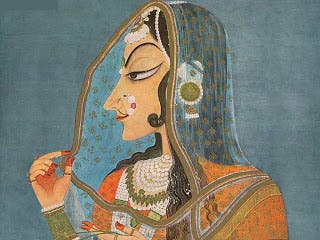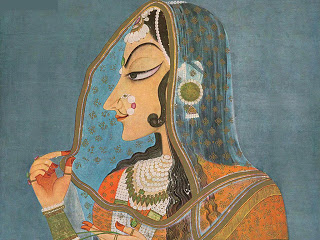Mum-Taz Mahal: A Mum in whose memory, one of the Wonders of the world “TAJ MAHAL” was designed.
Jan 21, 2015
Story


1631: The story of Taj Mahal reflects the intensity of love. Mumtaz Mahal was a rare found combination of beauty and brain. She was Shah Jahan’s (her husband) best friend and confidante. Some 2 to 3 million visitors come to the Taj Mahal annually, and nearly a quarter million arrive from overseas. All of them come with love and respect in their hearts for Shah Jahan. And many more girls envy Mumtaz Mahal for her glory and such loving husband. But one cannot omit the first three letters 'Mum' from her name to derive the remainder as the name for the building. Very Few people are aware of the fact that Mumtaz Mahal passed away as she was not provided with hygiene medication while giving birth to her 14th child. We see Taj Mahal as a tribute to their love but nobody ever knew that it was a tribute to motherhood too. Are we really learning any lessons from our past? Did Shah Jahan or any other emperor ever gave a thought on the matter that if they love their wives so much then how can they improve the childbirth hygiene so that no other Mumtaz Mahal succumbs to death while bringing a new life to this world.
In 1631, there were not many facilities in our country. There were no medications, no awareness and no facilities. Although, hygiene could be maintained but still I would accept the fact that because of absence of facilities a legendary beauty left the world. We are living in 21st Century now. India is developing at a very high rate. Every year lakhs of doctors graduate from medical colleges. Definitely the situation must be so much better today. Let’s have a small look on the statistics in 21st Century India.
2011: Having said that, now imagine bringing a baby into this world on a table stained and infected. That’s the experience of lakhs of poor women across India. It's a miracle that so many of them make it out alive. Let me take you to one such government hospital in Madhya Pradesh, a state with one of the worst maternal mortality statistics.
22 yr old Sheena rushed to the nearest hospital with her husband as soon as she had labor pains. Her Husband was running from one corner to another in the hospital just to get attention of any doctor or even a nurse. But, to his misfortune everybody kept passing the case to another doctor. She went to the hospital at 4 pm and just to get a basic medical aid they had to wait for 28 hours. Yes, the doctors checked her the next day. She died while giving birth to her first child. The child could never ever get even her mother’s first touch. If she was given timely attention, Sheena would have been alive. She wouldn’t have dreamt even in her worst nightmare of such an end to arrival of her first baby in this world would cost her own life.
Is India not a country for Mothers?
A mother dies during child birth in India every eight minutes. For every maternal death in India, 20 more women suffer from lifelong health impairments that result from complications during their pregnancies. Worldwide an estimated five lakh woman die as a result of pregnancy each year. Approximately one quarter of all pregnancy and delivery related maternal deaths worldwide occur in India. In Uttar Pradesh (Indian State), caste discrimination is an ingrained part of the medical system, doctors and activists say.
"Upper-caste health workers refuse to visit Dalit communities," said Lenin Raghuvanshi, a rights activist. "Because of that pregnant Dalit women do not get (nutritional) supplements and the majority of them are anemic."
It's not just mothers who died. Babies were stillborn and few of them were premature. Many of these children who survived, many are at risk without their mothers to take care of them.
Why Do Mother’s Die:
According to WHO,the major complications that account for 80% of all maternal deaths are:
• Severe bleeding (mostly bleeding after childbirth)
• Infections (usually after childbirth)
• High blood pressure during pregnancy (pre-eclampsia and eclampsia)
• Unsafe abortion.
There are 3 major reasons/delays for which even a well-educated mother is succumbed to death during child birth. If taken care of below delays caused, 90% of deaths can be avoided.
The First Delay: Pregnant mothers or their families often fail to recognize and seek medical help quickly enough, when a pregnancy related complication happens. This is due to illiteracy, not just in the family but also in the community that does not have adequate education or access to the right information necessary to spot the early warning signs. Women might also use ineffective home remedies due to traditional myths.
The Second Delay: Many mothers die at home or on their way to hospital due to lack of preparedness for any complication, lack of access to transportation or because they were referred from one hospital to another. The incidents of mothers dying because they cannot get to the right hospital at the right time is high because more than half of the child births in India still happen at home, and in most cases a skilled attendant or midwife is not available.
The Third Delay: Even if a mother gets to a hospital in time, there is no guarantee that her life is safe. The third delay happens when the right medical facilities, trained professionals, medicines and other critical inputs like blood are not available.The health care service system in India consists of three tiers. The facilities available, the expertise level of health care workers and quality of care differs widely at each level because of the lack of standards. For example, according to the National Family Health Survey II, less than 30 % community health centers had an obstetrician available; less than 10 % had an anesthetist.
Many rural and low income urban families first go to either a private nursing home or a primary health care facility. These centers are not equipped to handle complications that arise during a delivery. Some of them do not have access to basic services like a blood bank. The poorly trained medical staff takes a long time to recognize complications that occur during labour or immediately after birth.
The Solution:
Reduction of the first and second delays involves increasing “Birth Preparedness and Complication Readiness” by planning interventions at the community level including raising awareness of danger signs and improving access to information, communication and transportation. The best and most cost-effective strategy for reducing third delay and also maternal mortality is to provide Emergency Obstetric Care (EmOC) services within the reach of all pregnant women.




